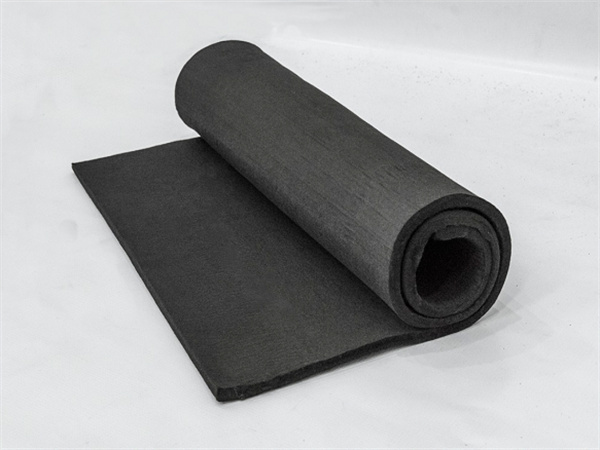Email: info@karssenmetal.com Tel: +86 18147353336
Carbon fiber felt is darker in color, has good electrical conductivity, and can withstand temperatures up to 1300°C. It is often used in long-term high-temperature environments, such as single crystal ingot casting furnaces, for heat insulation. The following is a detailed introduction to the production process of carbon fiber felt.

1. Impregnation and drying process of carbon felt: After the raw material viscose fiber cloth passes the screening and inspection, it enters the impregnation tank and is immersed in an aqueous solution of 1% diamine phosphate. After 1 hour, take it out and enter the continuous extrusion equipment for extrusion, and the extruded diammonium hydrogen phosphate solution is returned to the dipping tank. Dried up on a drying rack by natural light or electric dryer.
2. Carbon felt carbonization treatment process: the dried viscose fiber cloth enters the carbonization furnace and heats up to 300°C. The temperature rises first slowly and then quickly. There are nitrogen pipes distributed at the bottom of the furnace, and nitrogen gas is introduced into the furnace to protect the product carbonization gas. Carbonization is the process of removing the volatile non-carbon components in the fiber, increasing the carbon content and purity of the product, and forming carbonized fibers with a graphite-like microcrystalline structure.
3. Carbon felt activation treatment process: After carbonization, the viscose fiber cloth is heated to about 1400°C (furnace temperature) for activation, and the activated carbon fiber felt is the crude product. At the same time, the steam is passed through, and the fiber felt cloth is drilled with a high-temperature-resistant pipe, so that the specific surface area is increased, and the finished carbon fiber felt is obtained. The so-called activation process is to add a catalyst (such as nitrogen) to increase the number of activated molecules in the entire reaction, so that the properties of carbon molecules and atoms become more active and have greater energy.

4. Slitting and rolling: after the through-hole carbon fiber felt is naturally cooled, use a slitting machine, cutting machine, and rolling machine to cut into corresponding sizes according to sales needs, and after cutting, roll it and temporarily store it for sale.
Carbon felt is made of natural cellulose as raw material, pulp, spinning, etc., and it feels very soft. After impregnation, the flame retardant performance of the fiber can be improved, and chemical bonds or chelates can be formed between the phosphide and the cellulose molecules, so that intramolecular cyclization and intermolecular crosslinking can prevent the escape of molecular fragments, thereby improving the quality of the product. The yield.
Isostatic graphite blocks are an important graph
Graphite rotor belongs to graphite material, whi
Graphite sheets have many important roles in the
Contact: Bateer
Phone: +86 18147353336
Tel: +86 18147353336
Email: info@karssenmetal.com
Add: Room D204-2203, Innovation Building, Baotou Light Industry Vocational Technical College, 19 Jianhua Road, Qingshan District, Baotou City, Inner Mongolia, China.